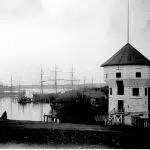
‘We’re ready for anything:’ dry fall and winter has province prepared for worst-case wildfire scenarios
NANAIMO — Provincial officials are readying for what could be a busy fire season this summer.
That’s according to the ministry of emergency management and climate readiness, which released its report on April 13, on seasonal emergency preparedness in advance of the spring snow melt and wildfire season.
Weather conditions from Aug. 2022 until now have been examined extensively, including extreme temperatures and precipitation or lack of precipitation in many cases, to try and anticipate how this wildfire season will unfold.
Fire information officer with the Coastal Fire Centre Julia Caranci said it’s still too soon to tell what the 2023 wildfire season will look like.



